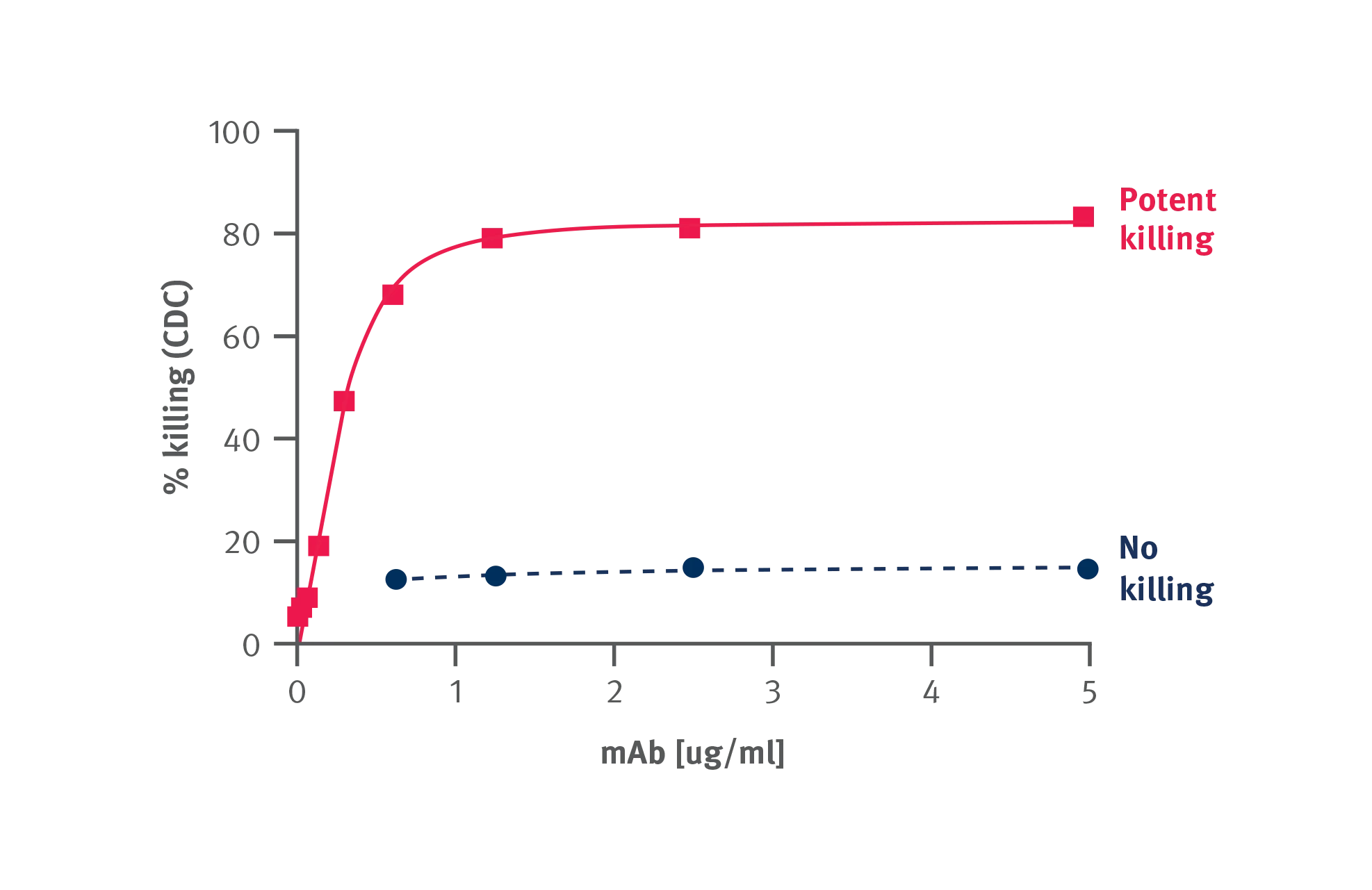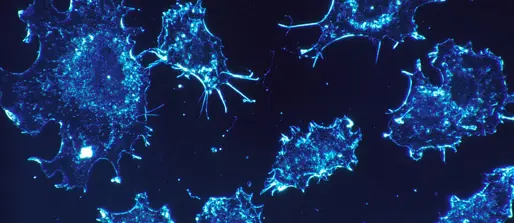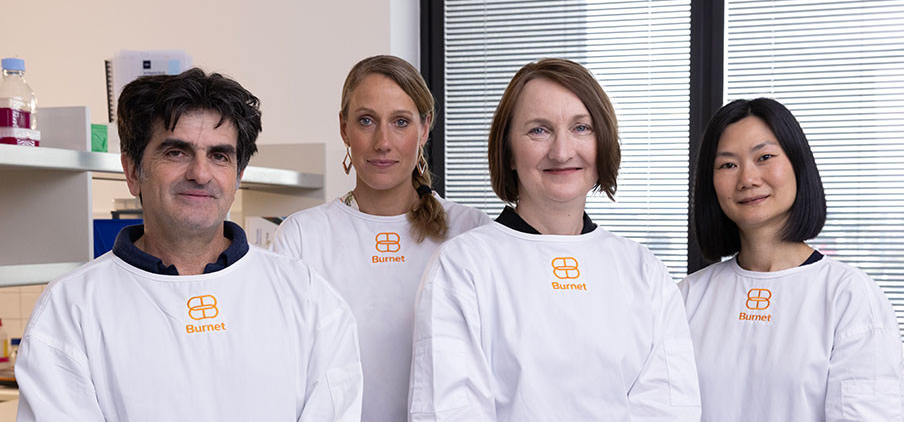- /
- Our work /
- Projects /
- Stellabody®
Stellabody®
Improving the efficacy of cancer, inflammation and infectious disease treatments.
Therapeutic antibody technologies have revolutionised treatments across a spectrum of diseases including cancer, infectious diseases and autoimmunity. However, these treatments have hit a natural potency ceiling as unmodified antibodies, as they occur in nature, do not aggressively engage the immune system. This means unmodified ‘natural’ mAbs are limited in their effectiveness as treatments for eliminating disease cells or for communicating with cells.
Stellabody® hexamer technology breaks through these limitations. It’s a transformative discovery that makes use of the multifunctional application of antibodies to disease but dramatically improves the potency of these antibodies and antibody-like biologics. This leads to the creation of function-enhanced therapeutics for the treatment of cancer, inflammation and infection.
The technology is a change to the Fc tail of antibodies which exploits their natural behaviour, resulting in the formation of hexameric clusters of the antibodies after they bind to their target.
These Stellabody® hexamers are the ideal launching pad for potently firing immune effector systems or to amplify communication signals to cells. Stellabody® enables antibodies to kill disease targets by the complement system and can communicate cancer cells to initiate a cell death process called apoptosis.
The need
The development of antibody and biological therapies has two key challenges:
- Monoclonal antibodies and their antibody-like cousins, such as Fc fusion proteins, are potential biological medicines that will readily target cancers, inflammatory cells or microbes but often have insufficient potency and lack efficacy.
- Existing antibody therapeutics come with limitations and don’t work for all patients.
Molecular engineering is needed to:
- develop new and powerful next-generation therapeutic antibodies.
- overcome limitations of existing antibody therapeutics to broaden their use to new treatments
- reach hard-to-treat patient populations.
This is where Stellabody® technology comes in.
The technology
Stellabody® hexamer technology was discovered in the Immune Therapies group at Burnet Institute, a globally recognised laboratory in this field.
Professor Hogarth has researched antibodies, their effector functions and roles in immunity and inflammation for over 30 years.

The graph shows Stellabody® modification's powerful immune killing of a cancer, far surpassing the antibody used in standard-of-care treatment which is ineffective. It highlights the potential effectiveness of Stellabody® in treating patients with cancer.
How it works
Stellabody® hexamer technology works by exploiting the normal biology of antibodies and drives them into formation clusters of six antibodies (hexameric clusters) once they have bound to their target e.g. cancer cell.
Just as flags help in co-ordinated attacks on battlefields, Stellabody® 'on-target' hexamers communicate a powerful danger pattern to the immune system to initiate effector responses to kill targets.
Molecular patterns are important beyond the function of the immune system. Communication by patterns is a fundamental property of cells and this often occurs through cell surface receptors. In an alternative application, the Stellabody® hexamer pattern can communicate the amplification of the signals of mAbs binding cell surface receptors.
Either way, by communicating with immune effector functions or through cell surface receptors, Stellabody® hexamers confer potent actions on antibody or antibody-like biologicals.

Human serum contains a collection of proteins called the complement system which is one of the most powerful destructive systems used by antibodies.
The Stellabody® antibody hexamers create the optimal platform for the landing and activation of the first components that trigger this complement 'cascade' system to kill disease causing cell targets.
Cell surface receptors normally deliver signals between cells. Antibodies or antibody-like molecules can poorly cluster these receptors and deliver weak signals.
Stellabody® technology clusters these receptors into hexamers which in turn initiates more powerful signals. This amplification of signals can be applied to ‘death receptors’ on cancer cell so that the Stellabody® hexamer patterning of these receptors strongly initiates a ‘self-destruct’ program that results in the death of the targeted cancer or immune cell.
The Stellabody® hexamer pattern may be used to communicate, particularly through TNFSF receptors, to a variety of immune cells to expand their number or activity. The applications are many, as are the opportunities for partnerships in varied biological systems.
Use cases
Stellabody® is a powerful and versatile technology adaptable to multiple antibody formats against a broad range of targets, with applications in a wide range of disease settings across cancer, inflammation and infectious disease.
In blood cancers, we are evaluating the Stellabody® hexamer technology in existing antibody medicines that bind to known targets in lymphoma, leukaemia and multiple myeloma. We have shown the Stellabody™ modification of anti-cancer monoclonal antibodies (mAbs) – such as isatuximab and daratumumab (CD38 mAbs) in multiple myeloma and CD20 mAbs in lymphoma makes them potent killers of cancer cells. We are also evaluating Stellabody® antibodies to new targets for treatment.
In solid tumours such as colon, ovarian and breast cancers we apply our Stellabody® hexamer technology to induce the death of cancer cells by a process called apoptosis or programmed cell death. Applying the Stellabody® technology to mAbs that target ‘death receptors’ on cancer cells induces extremely potent death signals that kill only the target cells. The on-target hexamerisation by Stellabody® death receptor-specific mAbs increases death receptor clustering on the cell. This clustering amplifies the death receptor signals leading to apoptosis-induced cell death and the elimination of the cancer cells.
Potent biologicals for the prevention and treatment of COVID-19, with extensions to other infectious diseases such as malaria and those caused by viral (e.g. HIV) or bacterial pathogens.
By combining an engineered form of the human receptor for SARS-CoV-2 and the Fc portion of an antibody into one biological drug, and applying Stellabody® technology, we have developed therapeutics to prevent and treat COVID-19 and other coronavirus diseases.
We are also seeking novel targets and new antibodies for a broader range of infections including key hospital acquired infections by antibiotic resistant microbes and emerging viruses to which we can apply the Stellabody® technology.
News and features

Making disease treatment more effective with Stellabody®

Exciting technology opens the door to new treatments for cancer and infectious diseases
Burnet Institute has entered into a Research Licence and Option Agreement with biopharma company argenx for a ground-breaking technology able to transform the way we approach cancer, inflammation and infectious disease treatment.
Featured publications
Resources
-
Stellabody® information deck
This slide deck contains more information about the Stellabody® technology and our associated patents.
Stellabody® information deck [PDF 2.5 MB]
Partners
Funding partners
- National Health and Medical Research Council (NHMRC)
- Walkom Bequest
- Janina and Bill Amiet Foundation
- Pat & Helen La Manna Cancer/Stroke Research Legacy
- Percy Baxter Charitable Trust
- Harry Secomb Foundation
- Margaret and John Crutch Bequest
- Medical Research Future Fund
- The State of Victoria COVID-19 Treatments Medical Research Fund
Collaborators
- argenx
- University of Melbourne
- Monash University
- WEHI
- Doherty Institute
- Perth Blood Institute
- Peter McCallum Cancer Centre
- Alfred Health
- University of Colorado
- King’s College London
Project contacts

Jennifer Barnes
Director, Commercialisation and Research Translation; Director, Burnet Diagnostics Initiative
Project team

Professor Mark Hogarth
Principal Investigator/Researcher

Jennifer Barnes
Director, Commercialisation and Research Translation

Reema Bajaj
Researcher

Sandra Esparon
Researcher

Dr Clarissa Whitehead
Researcher

Dr Bruce Wines
Researcher

Professor Louise Burrell
Collaborator
University of Melbourne

Professor Stephen Kent
Collaborator
University of Melbourne

Dr Amy Chung
Collaborator
University of Melbourne

Dr Adam Wheatley
Collaborator
University of Melbourne

Professor Dale Godfrey
Collaborator
University of Melbourne

Professor Menno van Zelm
Collaborator
Monash University; Erasmus University Medical Center, Netherlands

Dr Wai-Hong Tham
Collaborator
WEHI

Professor Kanta Subbarao
Collaborator
Doherty Institute

Professor Andrew Wei
Collaborator
WEHI

Professor Ross Baker
Collaborator
Perth Blood Institute

Professor Joe Trapani
Collaborator
Peter McCallum Cancer Centre

Professor Andrew Spencer
Collaborator
Alfred Health

Dr Alicia Chenoweth
Collaborator
King’s College London

Professor James (Jim) McDonnell
Collaborator
King’s College London




